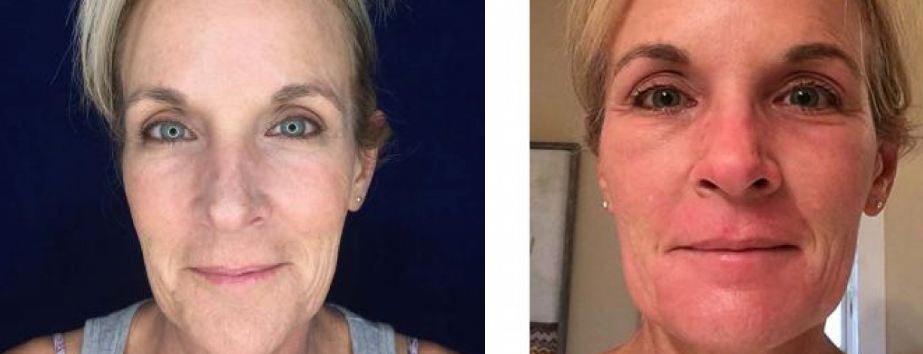Ablation is a technical term that medical professionals use to describe the removal of tissue. An ablative laser treatment is any procedure that involves the removal of skin cells, while a non-ablative treatment is one that does not.
Ablative VS Non-Ablative Lasers
Lasers are a potent tool that cosmetic surgeons use to improve the appearance of patients’ complexions. All lasers work by causing some kind of stress to skin cells that encourage them to go into maintenance mode, activating their latent rejuvenation potential. The way lasers deliver this stress, however, differs.
Ablative lasers work by removing the outermost layer of skin, helping to deal with issues such as scarring, hyperpigmentation, and skin laxity. By contrast, non-ablative apply stress by heating cells in deeper dermal layers, warming them up to the point where they begin to produce new collagen. Some therapies combine both techniques to induce the maximal hormetic effect.
About the Halo™ Laser System
Most traditional laser skin therapies use either ablative or non-ablative lasers. However, the Halo™ Laser System uses both. Dr. Aycock and the team first assess your skin issues and then adjust the strength of both the ablative and non-ablative components of the treatment to deliver optimal results.
The Halo™ Laser System is different from other forms of light treatment, such as BBL™ PhotoFacial. It uses lasers (where all the light produced is of a single wavelength), while BBL™ PhotoFacial uses photothermal light (which comprises many wavelengths).
Benefits of Halo™ Laser Treatments
Patients who receive Halo™ laser treatments at Dr. Aycock’s practice can expect a host of benefits. These include:
- Greater comfort: Halo™ is more comfortable than traditional fractional resurfacing technologies
- Faster healing: Patients are able to recover from Halo™ faster than many other forms of laser therapy and return to their regular activities more rapidly.
- Low downtime: While Halo™ contains an ablative component, most patients are able to return to work within a couple of days. Inpatient stays are not generally required.
- Improvements in sun damage: Sun-damaged skin is often damaged at the level of the DNA. Halo™ generates a stress response in the dermis that encourages cells to repair damage to the genome, improving protein expression.
- Improvements in pigmented lesions: Halo™ stimulates pigmented regions of skin to clear excess coloration.
- Reduce signs of aging: Halo™ targets lines, wrinkles, and skin laxity. Patients typically look more youthful and rested in the days and weeks following the treatment.
- Reduce the size of pores: Halo™ also helps to tighten pores, giving the skin a bouncier, more youthful appearance
- Reduces the appearance of acne scars: Halo™ can target both superficial and deep lesions.
Am I a Candidate for Laser Treatments?
Good candidates for laser treatment are patients with lines, wrinkles, skin laxity issues, scarring, enlarged pores, or hyperpigmentation. If you have particularly dark skin, deep wrinkles, or excessively sagging skin, other treatments may be more suitable.
Take the Next Step
Ready to take the leap? Schedule a consultation with board-certified plastic surgeon Dr. Robert Aycock in Walnut Creek, CA or Greenbrae, CA. You can reach us by filling out the form on this page or by calling (925) 937-8377.
Dr. Aycock serves the greater San Francisco Bay area.









